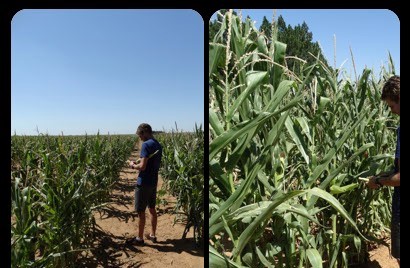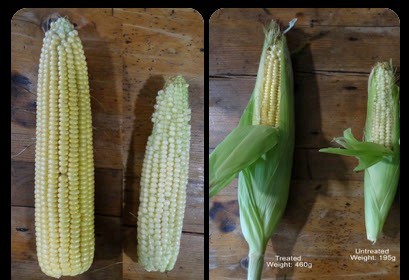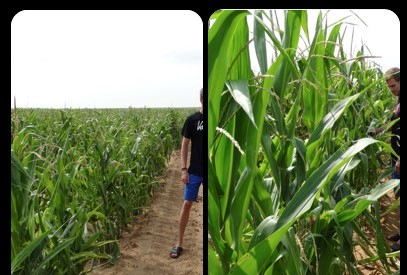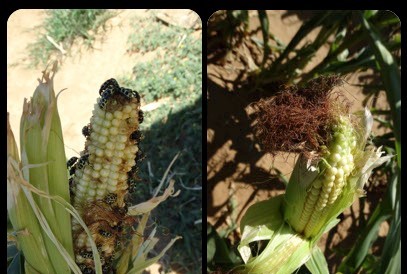GP-A3 formulated organic phytopathogen Plant defence mechanism
PRODUCT INFORMATION
GP-A3 is specially formulated to support plant defence mechanism in respect of heat, drought and cold resistance and other abiotic stresses.
ACTIVE INGREDIENT
A special blend of Essential Oils, Chitosan, Quercetin and Vitamin E.
DIRECTIONS
GP-A3 can be applied through conventional ground equipment, aerial application, or through properly equipped irrigation systems.
Soil Application: 1L per hectare.
Leaf Application: 1L per hectare.
Foliar (leaf) application has been proven to be the most effective method of treatment.
MIXING INSTRUCTIONS
1. Use 200-part water to 1 part GP-A3 - 1:200.
2. Put 200-parts water in a tank.
3. Add 1 part GP-A3 to water in tank.
4. Mix the water with the GP-A3.
GP-A3 PROTECTION AGAINST HEAT AND DROUGHT DAMAGE
Heat stress has an important environmental impact on cells and organisms. Membrane lipids have a pivotal function in temperature sensing and responses to heat stress. Cells need "instruments" for perceiving the possibly stressful environmental or physiological change to be able to transform the relevant physical parameters into a set of signals controlling enzyme activities, gene transcription, translation, and post-translational modifications. The common stress-induced mechanisms include the activations of heat shock proteins, defence reaction and oxidative defence system. As well as metabolism regulation, membrane -lipid reorganization, cytoskeletal rearrangement, and proliferation control.
Research has shown that through the process of acclimation, plants acquire the ability to alter the lipid composition when exposed to heat stress. The deep penetrating capability of the ANODS developed by the GP-A series Technology offers the opportunity to deliver the desired lipids to cell membranes before exposure to help protect cells and consequently reduce cell damage. This was enhanced by the addition of Chitosan.
Chitosan is a powerful bio-stimulant that includes the natural defence response of plants. This induction of natural defence response includes over expression of different defence related hormones, genes and enzymes, increase accumulation of phenolic compounds, cell wall synthesis etc. Plants treated with Chitosan as biotic elicitor molecules have been shown to induce this innate immune response.
Exposure of plants to different biotic or a-biotic stressed lead to deregulation or disruption of electric transport chain and consequently give rise to the generation of reactive oxygen species (ROS), which are considered as strong oxidizing and potentially harmful agents for the cells. Chitosan elevates important antioxidant enzymes involved in the scavenging of ROS.
This cocktail of natural ingredients has shown strong heat and drought protection, tolerance capabilities as well as coping and acclimation mechanisms.
GP-A3 BENEFITS
- ANODS penetrating through leaves offering a more effective, faster, and more direct delivery of vital support chemicals than that sourced in the surrounding soil via roots.
- There is clear confirmation that GP-A3 increases various plant systems, and notably photosynthesis and thereby also Chlorophyll, ATP, and energy.
- GP-A3 enhances plants' innate defence mechanisms.
- Because the formula comprises of only natural ingredients, it is not toxic.
- There is evidence that the GP-A3 formula enhances water retention and therefore offers improved moisture efficiency.
- There is conclusive evidence that the known temperature thresholds of plants are raised and consequently enhances its innate thermotolerance.
- In this experiment the crop in volume increased by 29%. This is a significant increase and confirmation that the enhanced thermotolerance capacity of GP-A3 also enhances crop size.
FIELD TRIAL
We have indicated above that 2015 and 2016 were the hottest years in recorded history, and conducted this experiment during a period where temperatures in the fortnight after treatment were excessive. Maximum temperatures during this period were consistently above 30 Celsius, and 10 of the 14 days recorded temperatures were 34 Celsius and higher. Thus, it can be expected that growth will be severely stunted.
The experiment started on 16 December 2015 where a portion of planted maize was identified and divided into strips where maize would be intermittently spread with GP-A3.
OBSERVATION
The photos below are records of observations over a 45-day period from 16 December 2016 to 1 February 2016, and later of the actual harvesting day.
PLANT GROWTH
The series of photos below clearly shows the difference in plant growth, plant structure and plant health (e.g., Photosynthesis) during the 45-day period of these observations. Further, as it is on record that it did not rain during the entire period plants displayed remarkable and distinctly superior moisture efficiency. This difference became clearly noticeable from day 32 onwards.

CONTROL / GP-A REHABILITATED
MAIZE COMPARISON 30/12/2015

CONTROL / GP-A REHABILITATED MAIZE COMPARISON 01/02/2016

CONTROL / GP-A REHABILITATED MAIZE COMPARISON 07/01/2016

CONTROL / GP-A REHABILITATED TOTAL CROP IN THE EXPERIMENTTAL GROUP EXCEEDED THAT OF THE CONTROL BY 29%

CONTROL / GP-A REHABILITATED MAIZE COMPARISON 18/01/2016

CONTROL / GP-A REHABILITATED INSECT REPELLENT EFFECT AFTER 45 DAYS